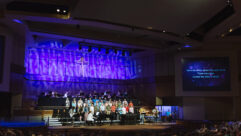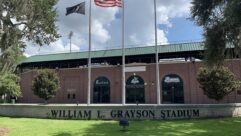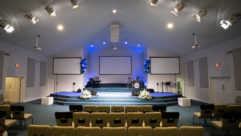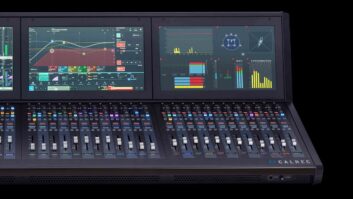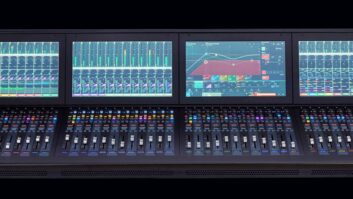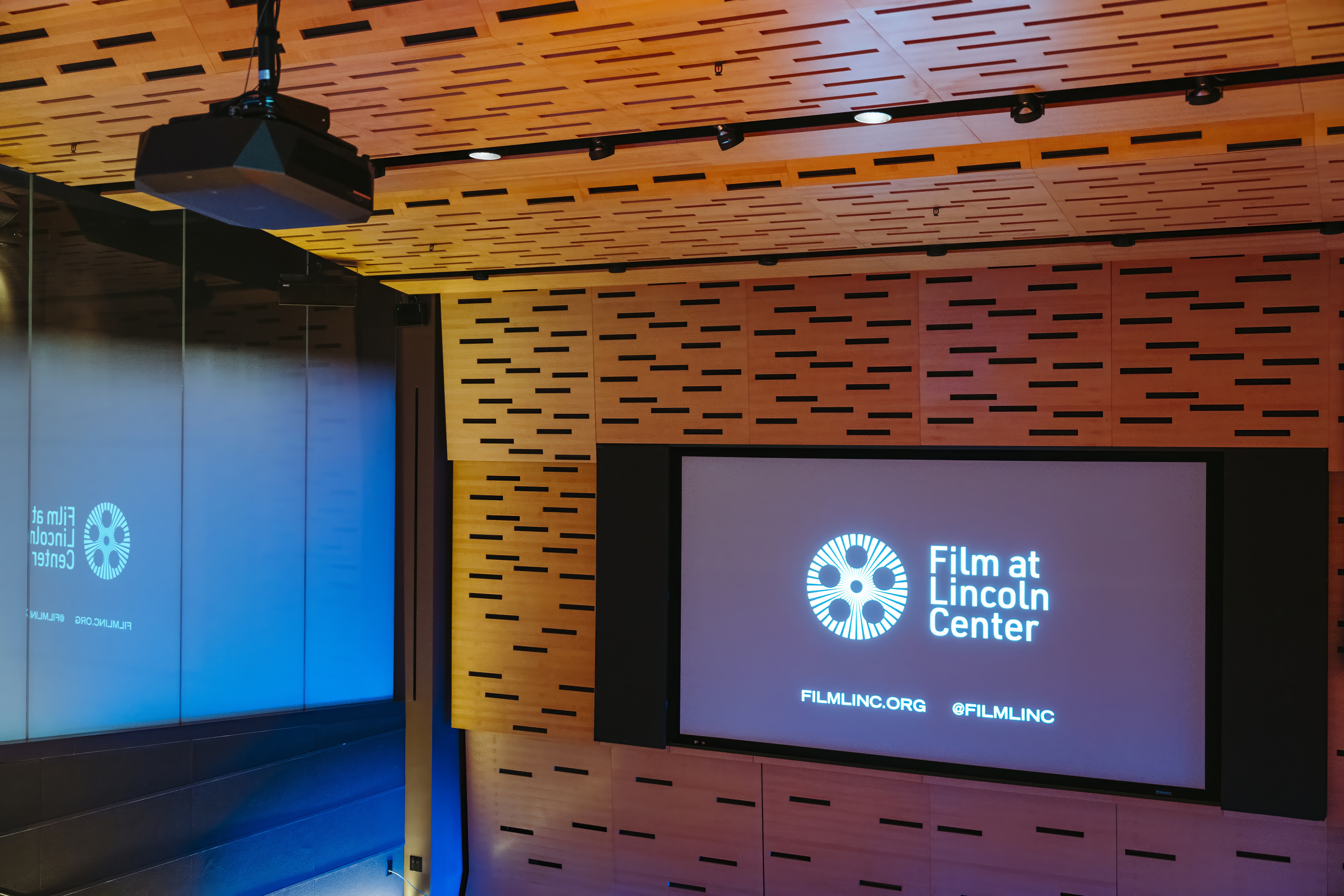
Media Ministries
Oct 19, 2011 2:24 PM, By Cynthia Wisehart
Case Studies in Media Capture and Distribution
Sidebar

Celebration Church
Celebration Church of Jacksonville, Fla. is a model example of the multisite church, part of a growing trend made possible by AV. In the 13 years since its founding, the church has grown to encompass 12 locations throughout Florida and abroad; more than 10,000 congregants attend every weekend, simultaneously led by Lead Pastor Stovall Weems through the power of video streaming.
Meanwhile, during roughly the same period—since 1999—the International House of Prayer (IHOP-KC) in Kansas City, Mo., was modernizing the congregation’s defining spiritual practice—24/7 prayer and worship—to serve a worldwide audience through a combination of live broadcast techniques and streaming.
Both of these churches grew their media ministries gradually and organically; in both cases, AV leveraged the spiritual goals, not the other way around. In both cases, technology allowed these churches to seize the outreach opportunity that fit their respective missions. Let’s take a look.
CELEBRATION CHURCH
For Celebration Church, a key component of the ministry was the leadership of Pastor Stovall Weems. As the church grew to encompass multiple sites, a goal was to bring the same passionate and engaging experience to all the congregants. This is despite the fact that each of site had its own production workflow and system design. The only universal technical denominator would be the streaming model.
The job of pulling disparate systems together under a single video delivery model went to Orlando-based consultant, Eastgate Productions. According to Eastgate’s Jayson Fuhlbruck, the engineering challenge was accommodating the wide range of production systems in order to create a standard for live video delivery. “A multisite is deployed based upon various requirements: the needs of the community; the geographic location, which is unique to each campus; as well as the facility or technology perspective of each location, all are taken into consideration,” Fuhlbruck explains. “Each of the multisite locations is then deployed with its own unique technology solution depending upon facility, size, and campus focus.”
Production for each of the remote sites at Celebration Church is run by volunteers, supervised by a central technical staff that helps support and maintain all of the technical needs for each site. As a result, it became crucial to create a standard for the streaming system, and one that was highly reliable, easy to use, and easy to train remote teams to run. It also needed to have a simple integration—both from a technical and logistical perspective—regardless of the unique production and network systems at each location. So, basically, standardizing for non-standard workflows.
“One of the engineering objectives we considered in designing this solution was to create a standard stream package for deployment,” Fuhlbruck says. “This would allow for a streamlined troubleshooting process and equipment maintenance plan for each of the remote sites.”
Media Ministries
Oct 19, 2011 2:24 PM, By Cynthia Wisehart
Case Studies in Media Capture and Distribution
Sidebar

Production for each of Celebration Church’s sites relies on a Haivision Makito high-performance low-latency H.264 encoder, which pushes a single 4.5Mbps SD video stream and two channels of stereo audio (265Kbps per channel) to each location.
Fuhlbruck found that at each of the sites, as with many AV applications, the focus of the initial system specification did not include key streaming components, if they were even considered at all. “For a start, it’s important to not only determine the selection of the codec, but it is also important to understand the limitations of choice for the correct codec based on application, how to distribute the stream over IP and its integration to the network environment, and how to choose the correct ISP based on the project needs,” Fuhlbruck says. “Companies looking to implement video delivery for a multisite model should understand that there are specialized products that not only simplify that effort, but they also enable easy duplication across sites so that a reliable, straightforward operation for the non-technical end-user can be achieved.”
The Celebration solution relies on a Haivision Makito high-performance low-latency H.264 encoder, which pushes a single 4.5Mbps SD video stream and two channels of stereo audio (265Kbps per channel) to each location. The Makito can easily address video-over-IP encoding anywhere on a resolution/bandwidth scale from CIF as low as 150Kbps to full HD at 15Mbps. “For Celebration Church, it is the combination of the Makito’s exceptionally low latency with ZiXi technology for timely delivery and recovery of lost packets that was critical to the use of low-cost common IP connections,” Fuhlbruck says.
Eastgate paired the Makito with the ZiXi, media broadcaster which distributes the live stream from the main Celebration Church campus over the public Internet to remote sites. Each site is equipped with a small rack that includes an Enseo set-top box, audio and video confidence monitors, and a DVR for remote playback. The system allows the local team to monitor and record the live video and audio streams to cue and play out the recording when it fits into the local service schedule. This delay gives the system a healthy buffer, and the solution itself is robust enough to ensure that even distant sites plagued by connectivity issues can maintain a consistent stream.
At Celebration’s main location—the source of the media content—Eastgate evaluated and made minor changes to the existing technology environments. Most of the adjustments were made to the network environment to ensure for a smooth migration to the new IP video delivery system. “We also optimized both image quality and stream distribution and outlined possible upgrade paths for the future,” Fuhlbruck says. The Eastgate team further helped Celebration Church to setup rules and provisions for its corporate environment and to prepare for the launch of live streaming via the public Internet.
Celebration Church broadcasts the message of both its primary worship services and youth services throughout the week and on weekends. Currently each of the sites equipped with a live streaming solution are set up with one central large screen and two smaller screens at each side. The signal sent to all three displays is the same, but the screens are positioned to maximize the presence of the pastor and foster an intimate environment that resonates with the character of the location. Fuhlbruck says this approach enables a connectivity that successfully engages remote sites and helps the church as a whole grow and embrace new locations.
Installation and training for each site required only a few days, Fuhlbruck says, and the streaming solutions deployed so far have been performing just as expected. “However, in every installation we outline a set of best practices to ensure that churches establish routine maintenance. These best practices also empower church staff to recognize the cause of any issues and where to look for the solution.” With the right combination of tools and knowledge, he says, Celebration Church can continue to roll out live streaming to new locations and remain confident in its ability to maintain a compelling and consistent connection to the pastor and primary broadcast campus.
Media Ministries
Oct 19, 2011 2:24 PM, By Cynthia Wisehart
Case Studies in Media Capture and Distribution
Sidebar

International House of Prayer 24/7 Prayer Room
IHOP-KC
The International House of Prayer (IHOP-KC) in Kansas City, Mo., is a community of Christian believers that comprises 84 departments and outreach ministries, all supported by the IHOP media center. The heart of the ministry is the 24/7 worship, which takes place in the prayer room and is broadcast nonstop around the clock. To accomplish this, IHOP-KC relies on a six-camera digital SD installation using production teams and worship teams working in two-hour rotations.
While the 24/7 worship has been going on for 12 years, IHOP’s Peter Burch says that just four years ago, the media operation, was very different. “Instead of 24/7 live professional broadcast, we were streaming only occasional conference footage and Friday and Saturday night worship on an ad hoc basis, taking the feed from cameras directly into controllers without switching or proper monitoring,” he says. “At that time, switching feeds was a mechanical operation—manually pulling plugs. This was obviously labor intensive, hard on infrastructure, and error-prone. Broadcast quality also suffered because the transitions were ragged—every time a plug was changed, the feed went momentarily black.”
The big change occurred when GOD TV, an international Christian broadcast network, recognizing the value and potential of IHOP’s message, and asked them to develop a permanent feed comprising multiple webstreams. “At the time, we recognized this as an outstanding opportunity to extend our worldwide outreach, but it came at a literal price—we had to make a significant investment in upgrading the infrastructure of our media center. In 2007, we developed a master plan to do just that, and we have been implementing it step-by-step as funds become available ever since,” Burch explains.
While the plan continues to be implemented, today IHOP boasts a modern, digital broadcast facility built around a Utah Scientific Utah-400 V-144 router (loaded 3G HD/SD 24×48) with Utah Scientific MC-400 master control switchers. “In fact,” Burch says, “we have become one of the world’s largest web-streaming operations, streaming some 400TB of video data per month via Haivision KulaByte XStreamCast servers.” The output of eight different channels covers not only the live prayer room but also conference and event feeds from IHOP’s HD auditorium facility, external conferences, and video on demand (VoD) archive services with main and reserve feeds on all channels. The Utah Scientific router enables IHOP to manage these feeds along with recording and playback from its Nexsan iSeries storage systems.
“When we made the move to digital routing, we considered five routing and master control systems,” Burch says. “For us, as a 24/7 broadcaster, reliability is fundamental as there is literally no downtime for maintenance. In fact, the continuous nature of the operation puts a stress on every aspect of our broadcast infrastructure—in particular engineering maintenance. The Utah Scientific system was not the least expensive in terms of purchase price, but it will have the lowest overall lifetime cost. That’s because of the company’s support and maintenance policy, which includes a 10-year, no-fee warranty as well as 24/7 live support. That was unique to the Utah system.”
Media Ministries
Oct 19, 2011 2:24 PM, By Cynthia Wisehart
Case Studies in Media Capture and Distribution
Sidebar

IHOP’s setup boasts a broadcast facility built around a Utah Scientifi c UTAH-400 v-144 router. IHOP broadcasts live from its 24/7 Prayer Room (picture right). Photo by: Becky Pratts
The move to digital routing and master control has naturally made switching feeds much easier to accomplish—important in part because IHOP employs a combination of paid, trainee, and volunteer technicians. “In all, about 10 people have been trained on the equipment,” Burch says. We now have an easy-to-understand graphical user interface (GUI) telling us where the signals are going at any given moment. And we can preset the system so that a single mouse click switches multiple circuits. Compared with the days of manually pulling and placing plugs, it’s a dramatic improvement in our onscreen presentation and service reliability.”
Tangibly, Burch can measure the return on the broadcast upgrade in terms of viewers. “Through our partnership with GOD TV and a terrestrial broadcaster serving Asia, we have extended our reach to regular viewers into more than 170 nations around the world. The influence of our professional-looking media product can also be seen in the 200 international applicants to the new-look International House of Prayer University (IHOPU) that opened at our new campus last year. Of course, that success isn’t entirely attributable to broadcast itself, but we have learned from our students and other viewers that professional packaging for a compelling message makes every aspect of our ministry look more appealing.”
IHOP-KC has grown exponentially since it was founded in 1999, and its fast growth continues, with more than 1,000 staff serving the ministry. It became necessary for the media center to keep pace with the growth in facilities and requirements, so Burch says it was important that the center was built with expansion in mind. “For example, we continually fi nd ourselves in need of more digital media storage capacity, and our latest investment is a Nexsan SATABeast SATA array for ultra-high capacity backup storage,” Burch says. “The Utah Scientific router’s capacity can be scaled up with the simple addition of cards. Today, we have some 40 sources for it, including VoIP inter-site feeds, cameras, servers and edit suites, and more are on the way.”
IHOP recently added a second smaller UTAH-400 router running in HD to support the seven lecture rooms installed at IHOPU. The key to both these installations was understanding the role that media would play in the ministry and congregant experience, which in turn shaped the technical approach. In the case of Celebration Church, the desire was to bring multiple sites together with a shared element—the lead pastor—but to allow each of the sites to control how that experience would be integrated at their site, both contextually and technically. For IHOP, the mission drove the technology toward a more traditional broadcast production workflow, but one that could easily integrate with web-based distribution.
Live Streaming Basics
As one of the most veteran suppliers of streaming options for worship applications,Digital Rapids has a good summary tutorial on factors to consider for media ministry, in particular live streaming. The paper includes basics of live streaming, technical considerations, and common mistakes. It will help you understand how encoding for streaming works and how to start to making decisions about whether to specify a content delivery network (CDN) or not, upload vs. download speeds, how to evaluate a network for streaming load, tradeoffs between resolution and bitrate, and an introduction to other distribution factors such as DVD and mobile.
For example, the choice between whether or not to use a CDN comes down to numbers that can rapidly grow, depending on the number of viewing locations to be reached. The amount of bandwidth needed is essentially the sum of all the individual viewing bandwidths—the bit rate of the stream times the number of viewers. So a 750Kbps bit rate to 100 viewers produces 75,000Kbps (75Mbps) far greater than the upload speeds of the majority of Internet connections.
For insight to this and the other equations that help determine a quality streaming experience, read Live Streaming Basics.
Media Ministries
Oct 19, 2011 2:24 PM, By Cynthia Wisehart
Case Studies in Media Capture and Distribution


